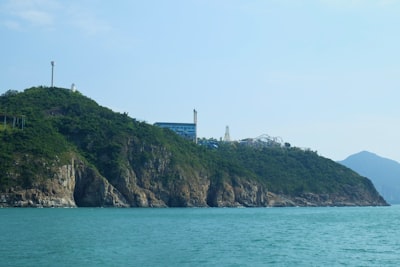North Korea's inauguration of a massive coastal resort, hailed by Kim Jong-un as 'one of the greatest successes this year,' signals Pyongyang’s ongoing strategy to showcase progress despite deep-rooted internal and external challenges. The sprawling Samjiyon-style facility, designed to project modernity and prosperity, invites scrutiny—does this glitzy façade mask deeper issues or mark a turning point in the regime’s approach to economic development and image-building?
The Symbolism Behind the Resort
This resort's unveiling is far more than a celebration of leisure. In a nation where tourism is tightly controlled and the economy is largely closed, such projects serve dual purposes: domestic morale-boosting and international signaling. Kim’s regime seeks to demonstrate resilience, modernity, and a break from international isolation, even as international sanctions continue to bite. Yet, the reality within North Korea is stark: chronic shortages, economic stagnation, and severe limitations on citizen mobility starkly contrast with images of luxury.
| Pros (Regime Perspective) | Cons (Critical Perspective) |
|---|---|
| Bolsters regime legitimacy | Diverts resources from basic needs |
| Attracts attention from potential tourists (mainly Chinese, allowed pre-COVID) | Propaganda tool masking hardships |
| Offers some economic diversification | Little impact on majority's living standards |
Controversies and Dilemmas
The primary controversy lies in resource allocation. While lavish construction surges ahead, most North Koreans face food insecurity. For elites, the resort is a showcase; for the general population, it's unattainable. International observers question the sustainability of such development and the potential for tourist revenues, especially as pandemic restrictions and ongoing sanctions hamper foreign visits.
Broader Trends and Insights
North Korea's penchant for grand landmarks—whether ski slopes, water parks, or this newest resort—reflects a broader authoritarian playbook seen elsewhere: use spectacle to steer the narrative and momentarily distract from hardship. Yet, unlike in some authoritarian economies that open selectively to foreign capital, Pyongyang neither meaningfully liberalizes nor broadly shares benefits.
The story also echoes a recurring global theme: states leveraging infrastructure for legitimacy, sometimes at citizens’ expense. It's a dilemma at the intersection of leadership image-making and genuine public welfare.
Actionable Insight: International engagement and careful monitoring are needed to distinguish between performative development and genuine reform—this latest resort is less a sign of opening than a barometer of regime priorities.
This article was inspired by the headline: 'North Korea opens huge coastal resort as Kim celebrates 'one of the greatest successes this year''.

Comments
No comments yet. Be the first to comment!